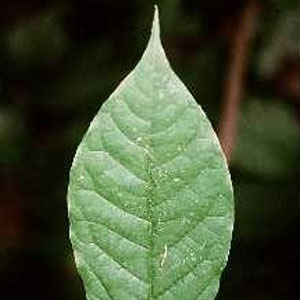Showing the single result
Pawpaw (Asimina Triloba)
Cold Stream Farm supplies wholesale and retail shipments of papaw and other deciduous trees. Our company is based in Free Soil, Michigan, with shipments at no minimum order delivered throughout North America. Pawpaw shrubs are available in the spring at various life stages and sizes. Please contact us today if you have any questions about the current or future availability of Pawpaw (Asimina Triloba) shrubs.
What is Asimina Triloba?
Cold Stream Farm has a limited supply of Pawpaw (Asimina Triloba) shrubs, which are a deciduous species native to eastern North America. Asimina Triloba is commonly referred to as papaw, but also has a variety of nicknames thanks to its prevalence and relationship with human history. Pawpaw is also called paw paw, paw-paw, melon tree, false banana, custard apple, Michigan banana, and American pawpaw.
What is a Pawpaw?
The word pawpaw was first interpreted by English speakers in the Caribbean while referring to a fruiting plant. Many people believe that the word pawpaw derives from the Spanish word “papaya,” whose fruits bear resemblance to one another. Today, a “pawpaw” may be synonymous with a papaya fruit in many parts of the world, used interchangeably in South Africa, New Zealand, and Australia.
Size and Appearance
A mature pawpaw tree will generally grow to be about 25 feet tall, spanning a similar width to the plant’s full height. It can be considered a large shrub or a small tree and is recognized by its large clusters of leaves, distinctive fruits, and dark purple blossoms.
Pawpaw leaves are very large, which causes them to droop at the end of the plant’s branches. They are bright green in color and can be as large as 12 inches long and 5 inches wide. In the fall, the leaves turn into a rusty yellow hue late in the season. It is said that the pear-shaped leaves smell like green bell peppers when bruised or crushed.
Pawpaw (Asimina Triloba) Fruit
Pawpaw trees produce the largest edible fruits native to the United States. The fruit has been eaten for centuries and thus has been called many names. To name a few, pawpaw fruits may also be called a hillbilly mango, quaker delight, banago, poor man’s banana, American custard apple, West Virginia banana, Appalachian banana, and many other regional “banana” names specific to areas such as Michigan, Kansas, and beyond.
Whatever you call them, pawpaw fruits are quite large, measuring up to 6 inches long and 3 inches wide. They tend to grow in bunches of 2, 3, or 4 fruits from one central stem. Hillbilly mangoes sprout as yellowish-green and mature to become dark brown in the fall. Once mature, the fruit of a pawpaw tree may begin to weigh down the branch it is grown on.
Most people enjoy the sweet taste of a pawpaw fruit, which is tangy and custard-like and said to resemble a banana, mango, or pineapple. It can be eaten raw but is commonly used in desserts such as baked goods and ice cream. However, some studies have shown that pawpaw fruits, bark, and leaves may contain traces of the neurotoxin “annonacin.” This has been known to cause nausea for some consumers.
Ideal Growing Conditions for Pawpaw Trees
Papaw shrubs grow best in USDA hardiness zones 4 through 8. They prefer moist and slightly acidic soil conditions but are very adaptable to a variety of climates and growing areas. Pawpaw trees are frost resistant and easy to raise in humid climates. Trees can be planted in full and partial sunlight conditions and may even tolerate full shade in some areas.
Overall, pawpaw trees are low maintenance plants, without any major problems from infestations. Young plants require regular watering, with the best chance of thriving in deep and well-drained soils.
Wildlife Interaction with Pawpaw Plants
Appalachian bananas are edible to more species than just humans, as the fruit of pawpaw trees are popular among raccoons, squirrels, foxes, bears, opossums, and other opportunistic critters. With natural, foul-smelling insecticide in its leaves, the rest of a pawpaw plant generally remains unbrowsed by insects, deer, rabbits, and other animals.
Pawpaws cross-pollinate with the help of beetles, fruit flies, and other insects. The plant is also a favorite food for a few butterfly species which are attracted by its “rotting meat” smell.
Interesting Facts about Pawpaw Trees
Chilled fruits from pawpaw trees are said to be a favorite of George Washington, and Thomas Jefferson planted pawpaws at his home in Virginia. Today, Kentucky State University operates the world’s only full-time pawpaw research program.
Order wholesale pawpaw from Cold Stream Farm today.
At no minimum order, Cold Stream Farm supplies retail and wholesale pawpaw plants for shipment across the United States. If there are not currently any pawpaw transplants available in our online store, please contact our team during ordinary business hours to learn about future shipments. Cold Stream Farm is an American live plant supplier, headquartered in Free Soil, Michigan.


